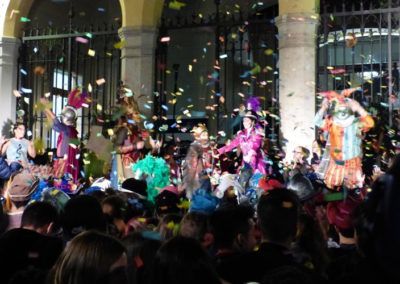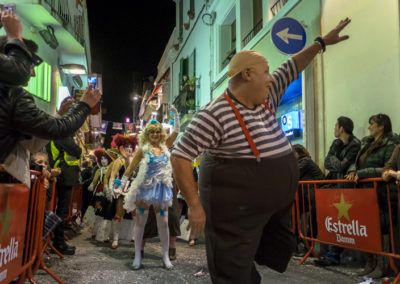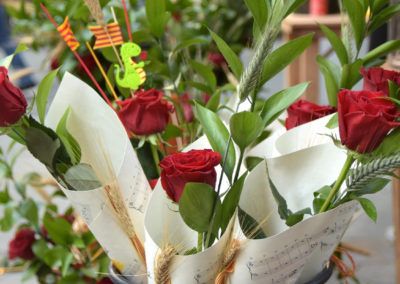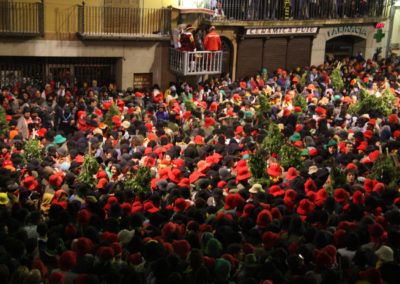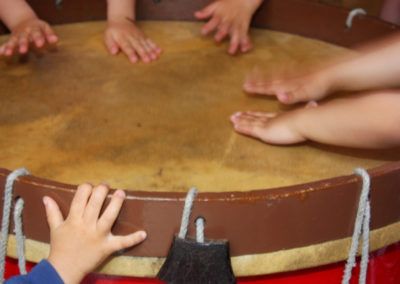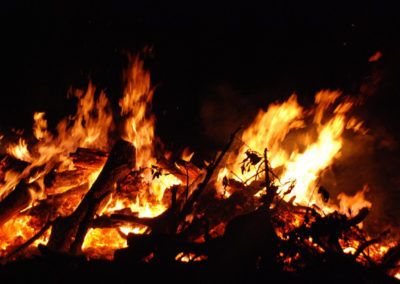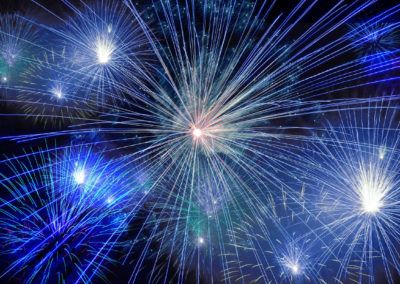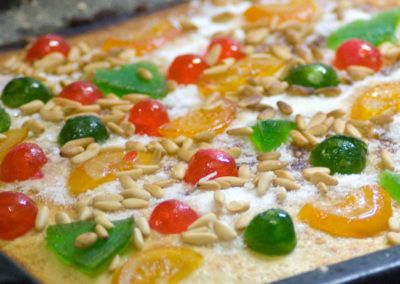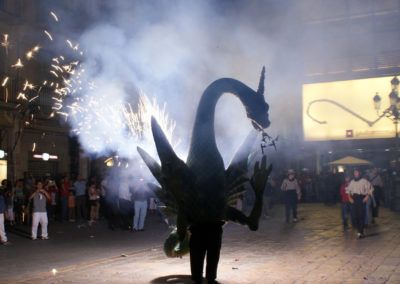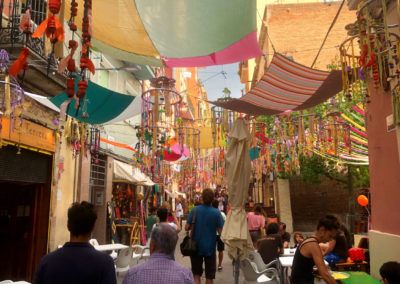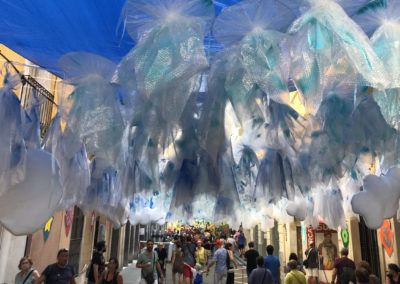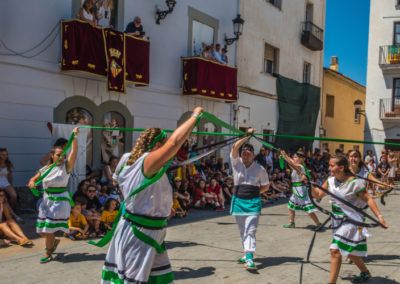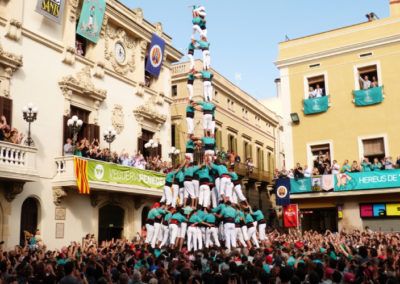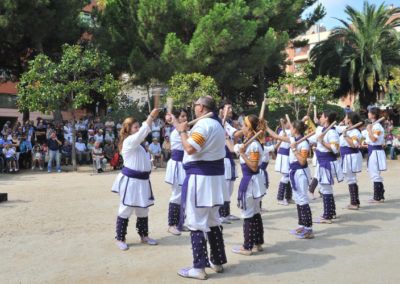Ok… you already have your local trip to Catalonia planned. You already know everything you need to know about Antoni Gaudí, you know where to see the best sunset in Barcelona and you know what the typical recipes of this territory are, but we are missing something… Oh, yes! What about traditions, culture and folk parties? You’ve hit the nail on the head: there’s no better experience than traveling through an entire territory and getting to know its culture through its festivities.
At the Centre Esplai Hostel we are sure that wherever you are in Catalonia and at any time of the year, as you will see in this entry, you will find popular festivals, fairs or traditional festivities full of life! In this article we want to highlight some very cool ones in case you haven’t seen them all yet!
Which Catalan festivity will be your favorite?

1. Carnival
when?
During the month of February (variable dates).
where?
All over Catalonia.
Carnival is a festival that is celebrated according to the lunar calendar, and therefore the dates vary each year. Normally, it is celebrated during the month of February, and it is a very transgressive and fun party ! You will see how people dress up, dance, sing, etc., but in each municipality you can live in different ways. What all of Catalonia does have in common is that there are two indisputable protagonists: the King Carnival, that is the one who opens the festivities with costumes and lots of fun; there is also the old “Quaresma”, an old woman with 7 legs, losing them one by one as the weeks go by until Easter. Go and celebrate this party in Sitges, Vilanova i la Geltrú or Solsona, emblematic places where Carnival is very, very important!
2. Sant Jordi’s Day
when?
On the 23rd of April.
where?
All over Catalonia.
LSant Jordi’s Day is one of the most beautiful festivities in Catalonia! Over the years, this festivity has acquired an increasingly vindictive tone for Catalan culture and, therefore, it is the perfect day to see all the aspects and values of this territory. It is celebrated on June 23 because it represents the day on which the knight Jordi died in the Middle Ages. A knight with a very, very famous legend! If you want to enjoy this party to the fullest, go to the squares and promenades of the municipalities throughout Catalonia, where you will find many stalls with the main elements of this legend: roses and books.
3. The Patum of Berga
when?
From Wednesday 15 June to Sunday 19 June.
where?
In the municipality of Berga, which is the capital of Berguedà.
The Patum of Berga is a great manifestation that was born with the festivities that accompanied the Corpus Christi processions during the Middle Ages in Catalonia. It is one of the biggest festivals in Catalonia – and a world heritage site – and is celebrated in Berga, a municipality located in the north of the province of Barcelona, and other surrounding municipalities. This festival is characterized by theatrical performances and parades of various characters through the streets! In addition, it has super cool characteristic elements: the Tabal, a large emblematic drum that is accompanied by the Quatre Fuets and that announce the start of the Patum festivities. There are gangs of devils who put on impressive shows with fire and pyrotechnic shows that will leave you speechless. There are many other towns and cities in Catalonia that hold parties with pyrotechnics as the protagonist, as is the case of the Aquelarre de Cervera.
4. Sant Joan’s party
when?
During the night between June 23 and 24.
where?
All over Catalonia.
Sant Joan’s party is one of the most important and massive festivals in all of Catalonia. I’m sure you’ll love it! It is a festival that takes place in all the cities of the territory and that marks the summer solstice. Usually, each city brings the Flame of Canigó to its main square, and the representatives of each neighborhood of the city take the fire and light bonfires in the key locations of each neighborhood! With this lighting of bonfires, the festivities begin in the squares and streets of the cities of Catalonia and families, the neighborhood and friends come together for dinner and music!
5. Festes Majors
when?
Between the months of June and September.
where?
In most towns, neighborhoods and cities in Catalonia.
The Festa Major is a great celebration that every Catalan town and city prepares! It is about a few days of music, activities, concerts, popular culture, fire, pyrotechnics, castles, fire pits, contests, popular dinners, etc. These are the festivities that the citizens of each municipality in this territory look forward to all year long! Of all the Major Holidays, we want to highlight some that are spectacular: the Festa Major of Gràcia, where all the streets of the neighborhood are dressed up; the Festa Major of Sants where well-known artists come to perform concerts; the Festa Major of el Prat, where concerts, contests and sports trophies are held; i the Festa Major of Tàrrega, full of popular culture, gastronomy and children’s activities.
6. Catalonia Day
when?
On the 11th of September.
where?
All over Catalonia.
The national holiday of Catalonia is called “Diada”, and it is one of the most important days of the year for the Catalan people! The 11th of September actually celebrates a defeat – which was the capitulation of Barcelona to the Bourbon troops in 1714 – which has become a day of defense of the rights and freedoms of the Catalan territory. It is a reaffirmation of the character and identity of Catalonia, its culture and its language! It is a day where you can find a lot of people all over Catalonia and especially in Barcelona, where there is the highest concentration of people claiming this holiday.
7. The Castanyada
when?
November 1st.
where?
All over Catalonia.
The Castanyada is a popular festival with more than three centuries of history and marks the winter solstice ! Amazing, right? This festival is celebrated on All Saints’ Day, October 1, and has three main elements: chestnuts, “panellets” and sweet potatoes. In the past, Catalans used to have a funeral party linked to pagan cults and made a typical autumn meal to be in communion with the dead. This food includes chestnuts, panellets and sweet potatoes. Over the years, this tradition has evolved and there has been a main character who is now the symbol of this day: La Castanyera! La Castanyera is an old woman who cooks all these typical autumn meals in the oven and distributes them among the neighborhood!
8. Christmas
when?
Between December and January.
where?
All over Catalonia.
Christmas is a set of festivities that we find in Catalonia and many other countries between the months of December and January. The parties we celebrate in December tend to be very family-friendly, as it involves dinners, lunches and the exchange of gifts. However, there is a tradition that only exists here and that is very interesting: the Tió de Nadal! It is a wooden log that we have to give him sticks until he has presents under him. The children have a blast! And in January there is also a very characteristic tradition: the parade, which is a parade made with floats of the kings of the east taking all the gift cards that the children have prepared at home!
